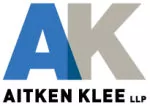Justice Manson's recent decision in Frac Shack Inc. v. AFD Petroleum Ltd., provides a framework for obviousness when dealing with a combination invention made from previously-known parts, and what constitutes a non-infringing alternative for the purpose of quantifying the defendant's profits.
Frac Shack Inc. is a manufacturer and operator of fuel delivery systems for the oil and gas industry, and it asserted infringement of Canadian Patent No. 2,693,567 by AFD Petroleum Ltd. AFD denied infringement and counterclaimed that the 567 Patent was invalid on the basis of obviousness, lack of sufficient disclosure, and claims broader than the invention made or disclosed.
A logistical issue in the hydraulic fracturing field is that fuel has to be delivered to each piece of equipment at the location, and a fuel shortage can result in down time for the well and significant wellbore problems. To minimize the risk of fuel shortages, fuel levels are continuously monitored and refueled as needed. In some cases, refueling is done while the equipment is operating, a procedure is known as "hot refueling". Manual hot fueling is dangerous because it requires workers to pull hoses to each piece of equipment and work in confined spaces with pumping equipment operating at high pressures. Due to the difficulties of carrying out this process, manual hot fueling often requires a three-person crew.
The 567 Patent discloses an apparatus and method for delivery of fuel to equipment at well sites, and was designed to replace manual hot refueling. In general terms, the technology was a system and method for delivering fuel comprising a fuel source with multiple fuel outlets attached to hoses which deliver fuel to equipment fuel tanks around a site independently of one another.
While all the experts agreed that the individual components comprising the 567 Patent were known, the Court held that the invention was not obvious because the problem the 567 Patent sought to solve was not identified in the prior art, and the analysis performed by the expert for the Defendant was improperly based on hindsight:
[253] Finally, the Defendant argues that a schematic for a refueling system, designed for this action by Mr. Berry while blinded to any knowledge of the '567 Patent (Exhibit M to the Berry Affidavit), was evidence that a POSITA would have found the '567 invention obvious. However, as counsel for the Plaintiffs' observed, Mr. Berry was given the instructions to "design a fuel system that would be capable of simultaneously supplying fuel to multiple fuel tanks on vehicles or equipment". These instructions are based on hindsight, which the Federal Court of Appeal cautions against in Bridgeview at paragraph 50.
[254] Therefore, it would be incorrect to suggest that Mr. Berry came up with the inventive concept of the '567 Patent. He was not in the position of a POSITA, because, in 2010, no one was focusing on how to solve the problems associated with manual hot refueling through the use of a technology like the '567 invention. The fact that a system similar to the '567 invention was designed easily by Mr. Berry, once the question was identified, indicates that the question itself—how to design a fuel system that can simultaneously supply fuel to multiple pieces of equipment at a fracturing well site—was not obvious.
The Court address all invalidity allegations raised by the Defendant, but agreed with the Defendant only in respect of the overbreadth of a subset of the asserted claims. For these claims, the Court declined to "read in" limitations from the specification in order to save claims that were too broad:
[231] In some cases, patentees and their agents come to the Court seeking validation of claims that are purposefully drafted broader than any invention conceived of, developed, or made by the inventors. They hope to secure the broadest protection possible for new, unobvious, and useful inventions, knowing that if some claims are overly broad, the cascading, narrower dependent claims, or other narrower independent claims, can survive the scrutiny of the Court. Claims construction is done by the Court "in the interest of fairness to both the patentee and the public" (emphasis added; Free World Trust at para 50). Therefore, these overly broad claims cannot, and should not, be upheld by "reading in" language or limitations not included within the fence posts of the claims being construed, based on a fair and purposive reading of the supporting patent specification—nothing in the '567 Patent supports the Plaintiffs' proposed narrow construction of work site.
The Court went on to find that Frac Shack was entitled to an accounting of profits, not including profits made from actual fuel sales. In determining this amount, the Court had to resolve whether manual hot fueling was a true alternative to the solution taught by the 567 patent. On that point, the Court held:
[312] I agree with the Plaintiffs that manual hot refueling is not a non-infringing alternative to using the '567 invention. Even if accidents due to manual hot refueling are rare, the fact that reducing the risk of an accident creates a significant improvement over the alternative hot fueling system, because the consequences of such an accident can be life threatening or cause millions of dollars' worth of damage to the fracturing operation.
As a result, the full gross profits made by AFD from the rental of their equipment, excluding the profits from fuel sales, were ordered to be paid to the Plaintiffs.
A copy of Justice Manson's Reasons may be found here.
The content of this article is intended to provide a general guide to the subject matter. Specialist advice should be sought about your specific circumstances.

